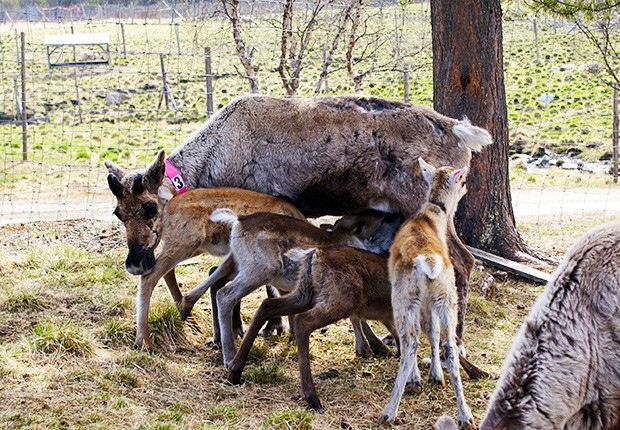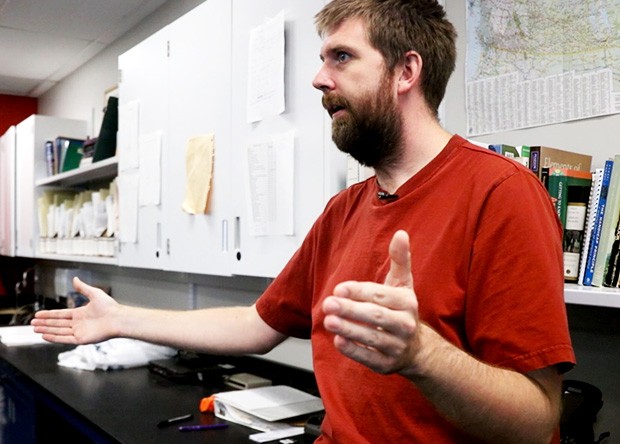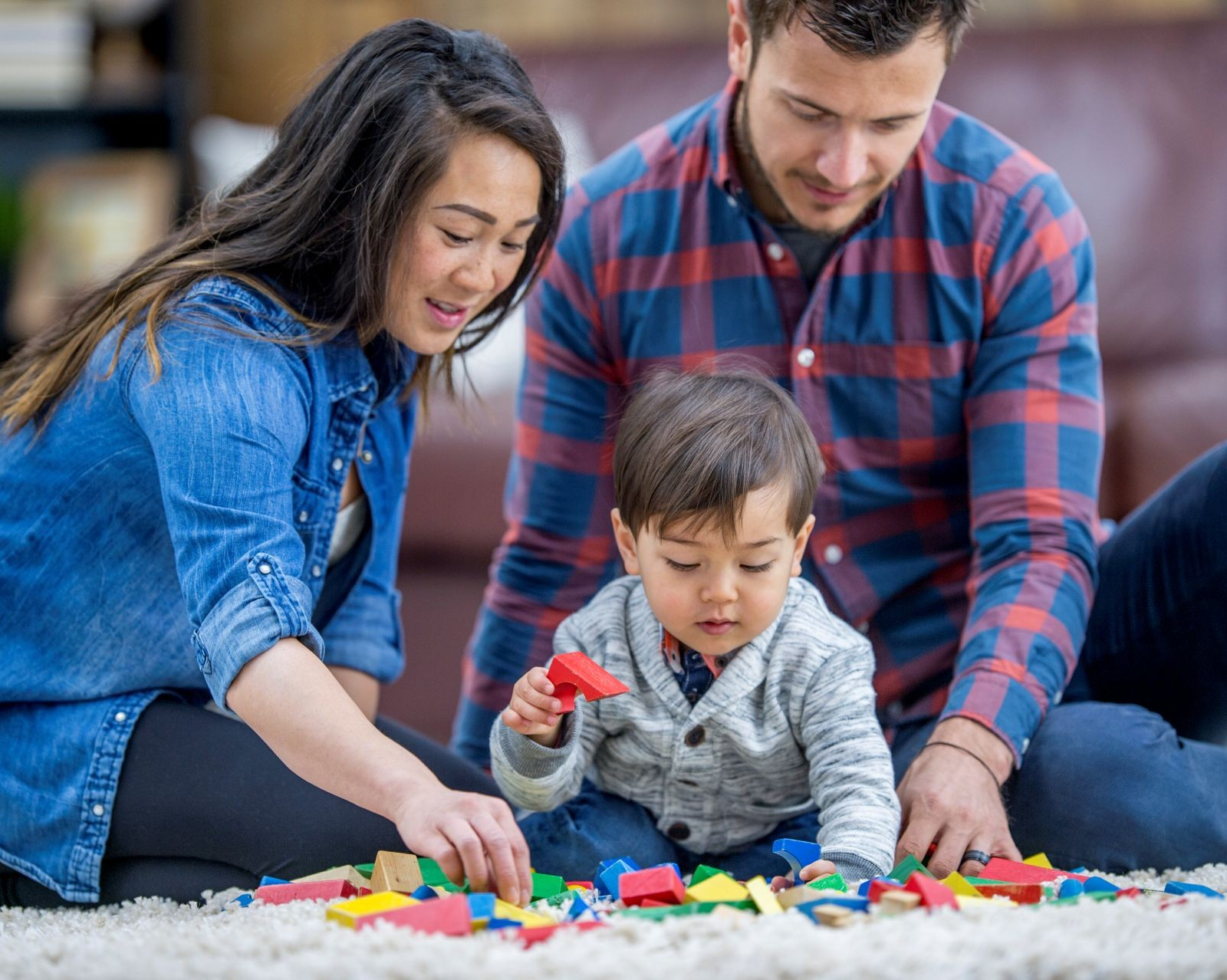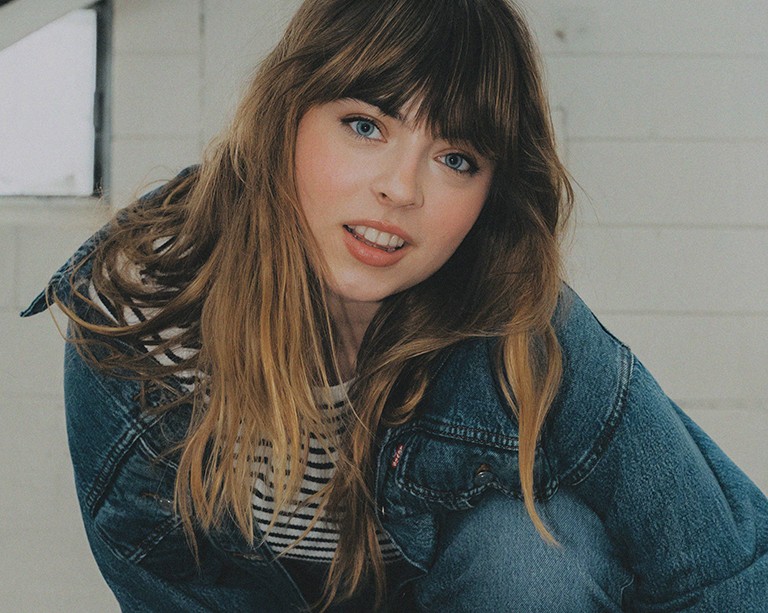What motivates ‘costly’ milk sharing among reindeer?
 In Finland, the calves were curious about the researchers and would sometimes lift their front hooves against an observer’s chest. | Photo by Covadonga Martinez de Rioja Gardeazabal
In Finland, the calves were curious about the researchers and would sometimes lift their front hooves against an observer’s chest. | Photo by Covadonga Martinez de Rioja Gardeazabal
Mother reindeer risk the health of themselves and their calves when they share their milk with other young mouths in the herd. Is this behaviour selfless or self-serving?
Sacha Engelhardt has spent years studying milk sharing, known as allonursing, while completing his PhD thesis in Robert Weladji's lab at Concordia University.
Weladji, an associate professor of biology in the Faculty of Arts and Sciences, published his first scientific paper on reindeer in 2002. The northern ungulates have been central to his research ever since. His lab studies population ecology, behavioural ecology, biodiversity conservation and welfare of captive wildlife.
Engelhardt’s work focuses on the advantages that reindeer calves have in a group. Many animal groups share the burden of childcare — the benefits of babysitting are obvious. But the risks of milk sharing can be greater than the rewards.
“It’s a highly costly behaviour,” says Engelhardt. “It can reduce the amount of nutrients that a mother can provide to her offspring. Lactation is the most physiologically demanding part of mammalian reproduction.”
Not only that, but he says that this kind of teat-sharing teamwork could lead to the spread of disease.
 Sacha Engelhardt describes some of the challenges of his fieldwork. | Photo by Megan Perra
Sacha Engelhardt describes some of the challenges of his fieldwork. | Photo by Megan Perra
Targeted cooperation?
So, why would a mother assume the risks just to help someone else’s calf? Engelhardt has exhausted several hypotheses in search of an answer, and he’s still coming up with more to explore.
“We have evidence for kin selection, we have some evidence for improved nutrition, we have some evidence for reciprocation,” says Engelhardt. His paper, published earlier this year in the Journal of Mammalogy, suggests that reindeer mothers nurse the calves of their relatives more than others, but these results can vary depending on a study’s design.
Mothers and daughters that normally stick together for other seasons stay far apart during calving, weakening the idea that this is an activity reserved only for the extended family.
Engelhardt recently published another paper in the Journal of Mammalian Biology on how allonursing calves receive better nutrition and gain weight more quickly.
As his previous research suggests, it may be that the reindeer mothers are not so much sharing their milk as they are trading it. So, a mother would nurse another calf because her own calf has nursed from someone else.
“We’re not sure whether or not it is targeted cooperation,” says Engelhardt. “I can’t talk about their cognitive abilities so far.”
What his most recent research does find, however, is that the reindeer don’t look to return the favour immediately after their calf has suckled from someone else. The chances of reciprocity actually increase over time, and many of these reciprocations happen between pairs of reindeer mothers.
It’s still unclear if this trading of milk between offspring is a conscious reciprocation of milk, but Engelhardt says he’s interested in further exploring this cooperative behaviour to perhaps determine whether or not it’s intentional.
Find out more about Concordia's Department of Biology.




